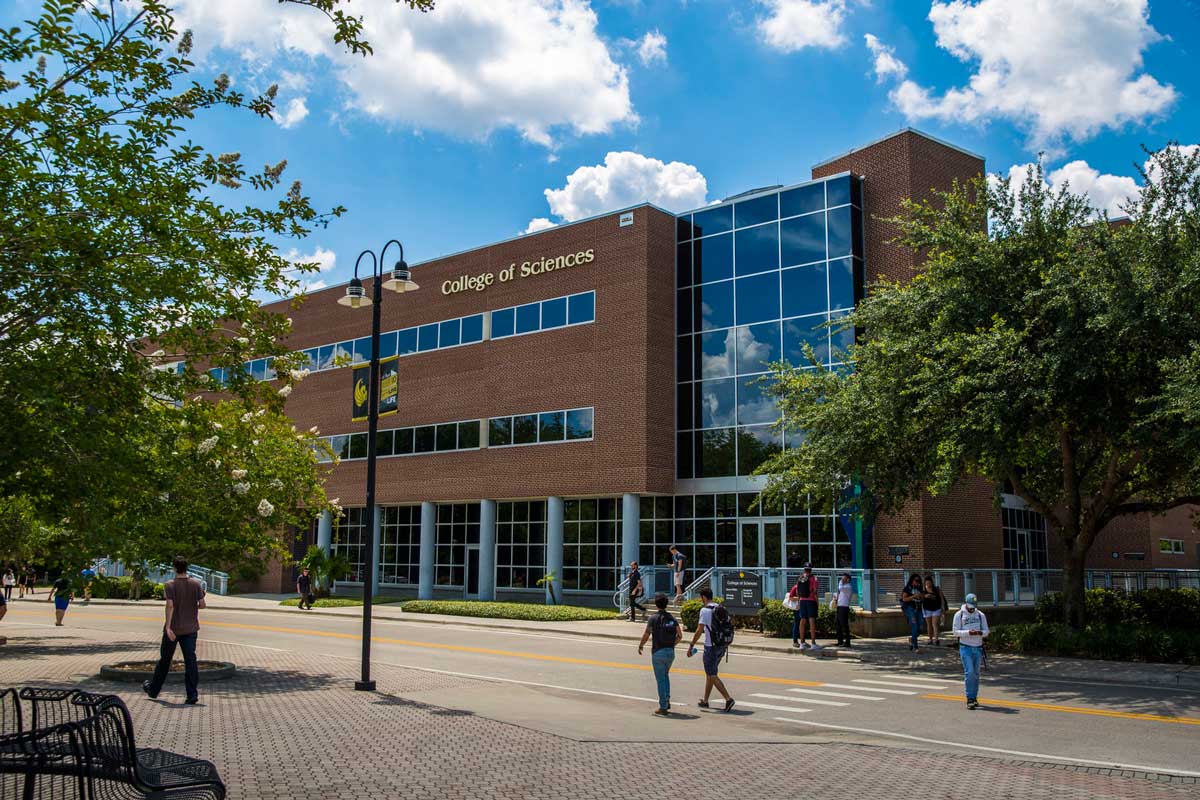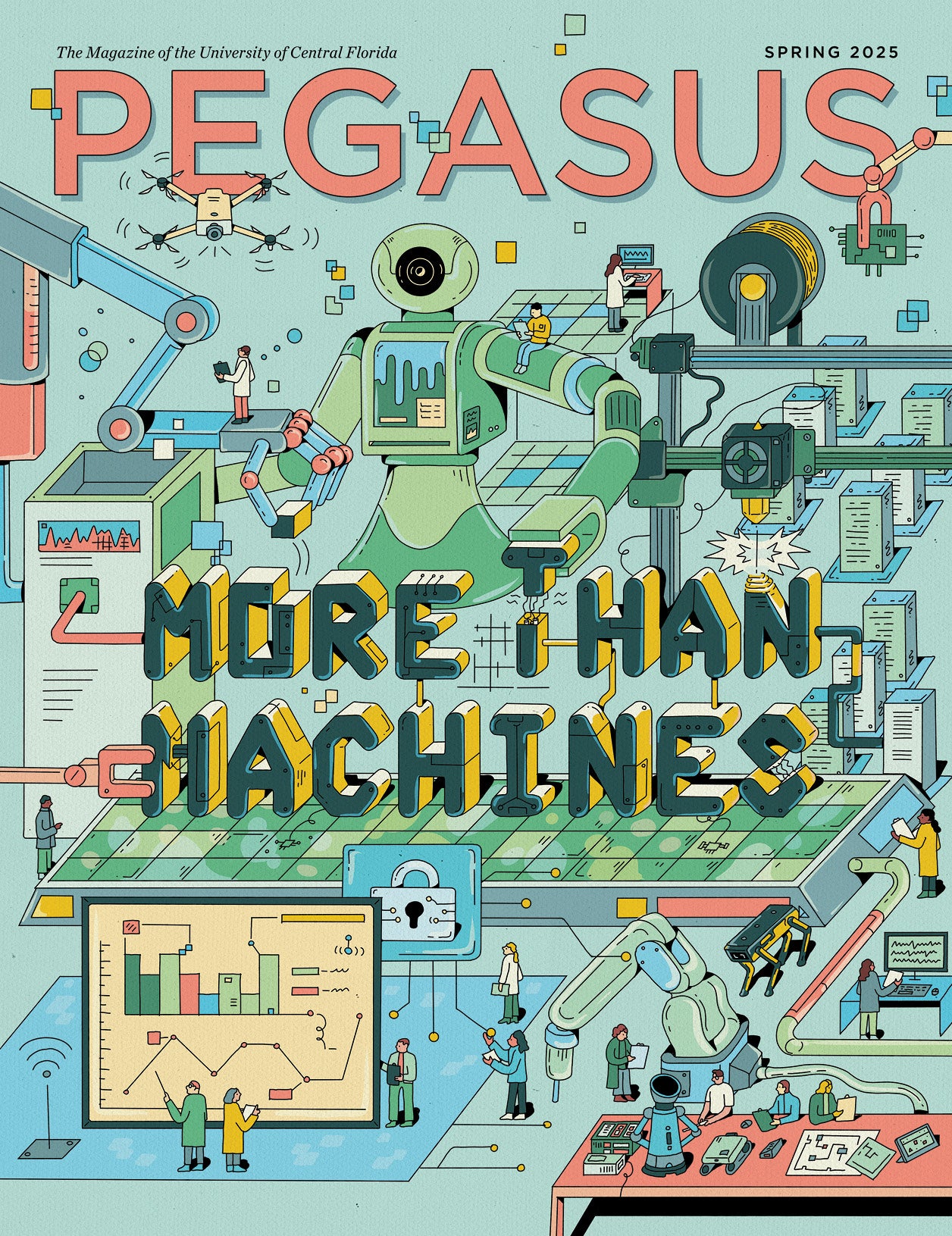Noble metals, such as platinum, palladium, and rhodium are among the most versatile and efficient industrial catalysts for a large number of reactions, ranging from the purification of poisonous pollutants emitted by vehicle engines to the generation of commodity chemicals or clean energy resource, which benefits the environment and our society. But there’s a limited supply of noble metals, which makes them expensive.
A UCF-led team of scientists and engineers are hunting for ways to reduce the need for noble metals such as platinum in promoting chemical reactions by reducing the total amount needed or swapping it out for other materials that are just as effective. The team will explore whether single atoms of platinum, palladium or other metal-based materials will work just as effectively if properly prepped on other inexpensive surfaces such as ceria or zinc oxide. The National Science Foundation recently gave them more than $750,000 grant to see if the approach will work.
“If we can do it, we will have discovered a material that can reduce the noble metals usage or replace noble metals at a fraction of the cost,” says Talat Rahman, a physics professor, who is leading the project. “Once our fundamental research can establish the propensity of the proposed single atom catalysts and nano catalyst and we can show how to prepare them effectively, they will be good candidates for large scale applications for both environmental and energy sustainability.”
In other words, if highly stable and effective single atom catalysts can be predicted and synthesized facilely, industries would need less than one tenth of the present noble metals to achieve similar or even higher catalytic performance, to purify the air we breathe, to clean the water we drink, to produce vital chemical build-blocks, or to generate clean fuels such as hydrogen that drive our mobility. The substitution of noble metals using single atom base metals as catalysts will further reduce the production cost without sacrificing performance, making the process more environment friendly and energy sustainable.
Rahman, UCF engineering assistant professor Fudong Liu and Brewton-Parker College physics associate professor Sampyo Hong will work with undergraduate and graduate students including several from underrepresented groups as part of the project.
Sounds like an easy endeavor, but scientists and engineers have been trying to crack this mystery for years. The challenge is that at the quantum level, smaller than what can be seen with standard microscopes, the rules of physics in the macro world don’t appear to apply. Objects don’t always behave the way we would expect, making it even more difficult to anticipate and predict reactions. That’s why the interdisciplinary nature of this team is one of its strength, Rahman said. Bringing together chemistry, physics, engineering and material science expertise was the key to coming up with the idea.
Rahman and Liu have been working on this idea for a while. They are members of the Renewable Energy and Chemical Transformation (REACT) cluster at UCF. Rahman collaborated with Hong while he was a research associate at UCF before taking the teaching position at Brewton-Parker.
“It’s exciting work that my experimental team can closely work with theory experts like Dr. Rahman and Dr. Hong on such a timely research topic,” Liu says. “In this project, we will move away from the Edisonian method of trial and error and move towards computation and experiments working in tandem.”
Instead of starting synthesis of a catalyst by using age old recipes of mixing various components etc., Rahman, Hong and their students will first carry out modeling and simulation of catalyst nanostructures based on insights that they have already gained from many years of work in the field which have helped them develop certain hypothesis and a set of guidelines for arriving at the ideal local atomic environment that could facilitate a chemical reaction of interest.
The team’s simulations will further modify these guidelines or establish new ones, which would then set the stage for the synthesis and experimental characterization of the proposed catalysts. Once experimental results on rationally designed catalysts are obtained from Liu and his team, the theory and computation team will help rationalize the results and fine tune the guidelines leading to more experiments, more characterization, more computation and repeat of the feedback cycle. This is a paradigm shift in single catalysis and nano catalysis research.
An important part of the project to the researchers is the ability to give hands-on experience to students of color. Rahman serves as the site leader for the American Physical Society Bridge Program, which aims to increase the number of physics doctorates awarded to students of underrepresented groups.
“Even before the internet ushered the technological revolution, scientists were very busy finding common language and techniques so individuals from different disciplines could bring their expertise together to solve some of the grand challenges of our times,” Rahman says. “Now it has become almost a requirement that this be the case. It is thus our responsibility to train our students in interdisciplinary thinking and collaborative research to tackle big scientific and technological issues, such as discovering cost effective materials to serve our energy needs. Such training not only opens new doors for our students, it also helps develop a holistic and competitive work force ready to anticipate the new challenges of future generation.”
Liu agrees.
“We, as engineers, usually try to solve many problems using our hands-on experience,” he says. “The world is changing so fast requiring both efficiency and accuracy, and theoretical prediction and machine learning can greatly help us to narrow down the targets we want to shoot in catalysis research. I am very glad to be part of this excellent project team, so I can train the next generation of catalysis engineers in a different way than I had before.”
Liu joined UCF in 2018. He has a doctorate in environmental science and has published more than 70 peer-reviewed journal articles.
Rahman joined UCF in 2006. She has multiple degrees including a doctorate in physics. REACT cluster. She is a frequent speaker at national and international conferences and has published more than 250 peer-reviewed articles.




